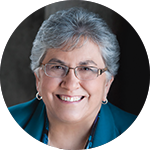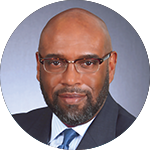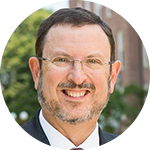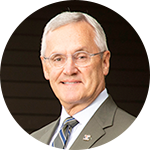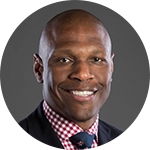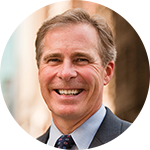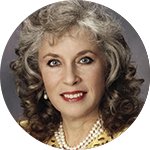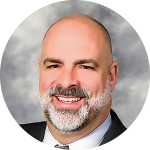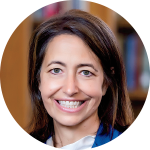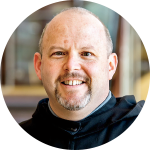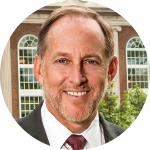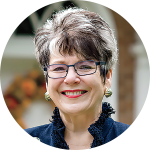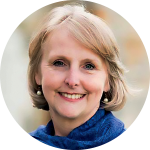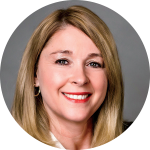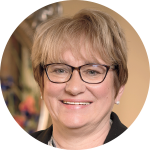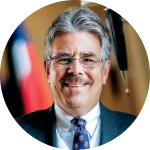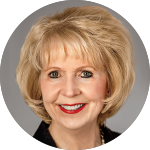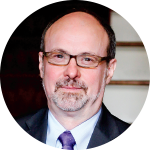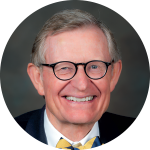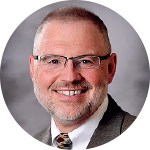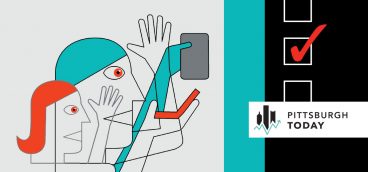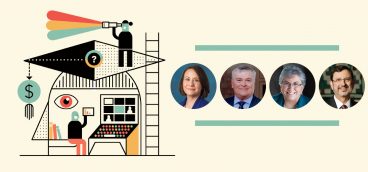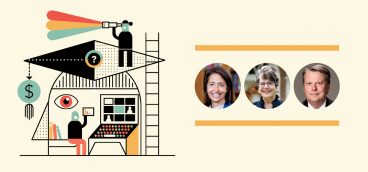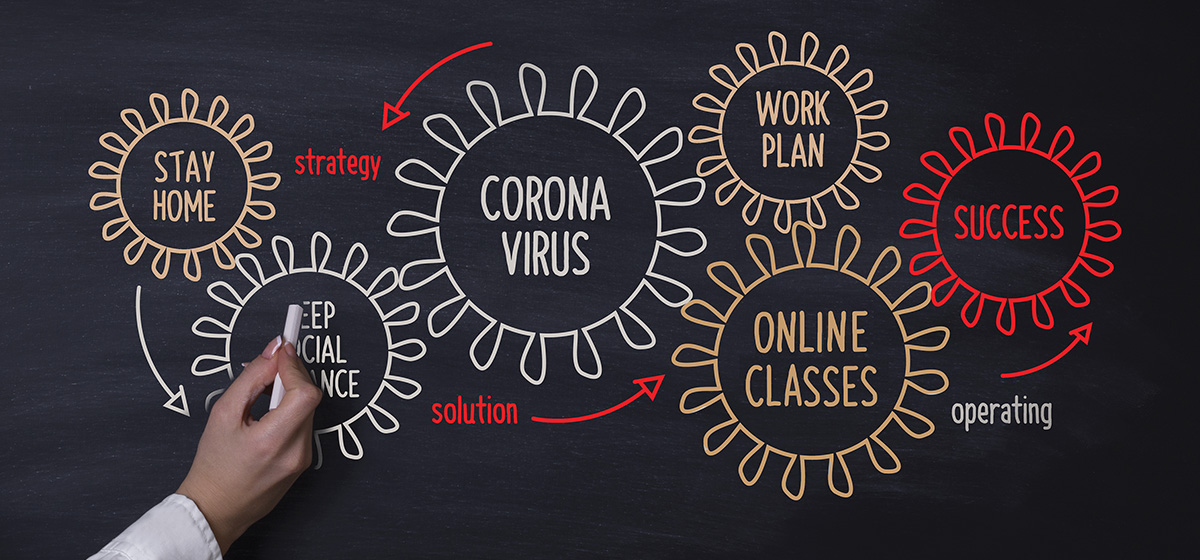
In this ever-shifting, precarious time for regional colleges and universities, we would like to thank the leaders of these institutions for taking the time to thoughtfully answer the following questions for our readers: “Given the extraordinary challenges posed by the pandemic, what major changes are in store at your institution for the school year ahead? And what are the biggest challenges you expect to face because of these changes?”
Sister Candace Introcaso, La Roche University
While COVID-19 presents many unique challenges, La Roche University has prepared extensively for the 2020–21 academic year. New safety measures include mandatory face coverings, social distancing protocols, daily temperature/symptom screenings, a phased return to work approach for nonessential employees, and routine cleaning of high-touch surfaces and service areas.
The university also revised its instructional delivery and residence life options to reduce the campus footprint. In addition to our normal small, immersive, in-class experiences, students will have more online course options and a collaborative, Hi-Flex classroom model in which they only are physically in the classroom once per week. All of these possibilities will enable adequate social distancing at all times.
The uncertain and evolving nature of COVID is the biggest challenge we and other institutions face. Should circumstances change, we need to be ready to take swift action in keeping our faculty, staff, students and neighbors safe. However, the health and safety policies we plan to implement in the fall have prepared us for a variety of scenarios. La Roche stands firmly in its commitment to the well-being of its entire campus community, and I am confident in our ability to continue providing a high-quality education under extraordinary circumstances.
Quintin B. Bullock, Community College of Allegheny County
During the COVID-19 pandemic, CCAC has been committed to safeguarding the health and well-being of the college and the wider community while ensuring that students have the resources they need to achieve their academic goals. CCAC was quick to modify college operations in response to the pandemic to ensure both academic continuity and the safety of students, faculty and staff. With the closure of all facilities, hundreds of credit courses were converted from face-to-face to online or alternative delivery formats. Since then, the college has worked diligently to develop and implement a comprehensive safety plan for the resumption of face-to-face instruction. This includes ensuring safe and accessible support services and activities for the summer and fall semesters as well as the remainder of the 2020–21 academic year. The protocols and plans set forth in CCAC’s COVID-19 Reopening of College Facilities Plan will continue to be updated as needed. CCAC’s safety protocols are already in place, with the wearing of face masks or coverings and physical (social) distancing essential requirements to carrying out this plan in a responsible manner. These and other safety protocols are found in greater detail in CCAC’s COVID-19 Health & Safety Plan.
Michael Driscoll, Indiana University of Pennsylvania
Early on, we determined these core principles to guide decision-making: providing a high-quality educational experience, protecting health and safety, communicating information and decisions quickly, and holding fast the ties that unite the IUP family.
While changes have been forced upon us by something terrible, there is a silver lining. We have moved more rapidly to meet the goals of our new Strategic Plan, which are to become both completely student centered and solution oriented.
While physically distant, the Crimson Hawks family is in this together: 700-plus alumni and friends donated $275,000 for IUP’s Emergency Response Fund, supporting hundreds of students facing financial challenges created by the coronavirus.
As we adapted to the pandemic, we dismantled longstanding silos, making us stronger and more nimble—now and for the future.
The pandemic created an urgency to put our research strengths, expertise and resources to work in our community. In April, we partnered with our medical center to provide same-day, local COVID-19 testing, unusual at a rural hospital. In August, we began work with the hospital’s medical staff on a national clinical trial evaluating the efficacy of 3D printed testing swabs. These initiatives have opened the door for new ways of thinking about collaboration, promising enhanced student experiences as we innovate to meet the needs of our community, which is more important than ever for our post-pandemic world.
James P. Tressel, Youngstown State University
While the challenges presented by the coronavirus pandemic are significant and widespread across all of higher education, our major goal at Youngstown State University remains the same: to provide a quality educational experience in a safe environment that will lead students to personal and professional success and fulfillment.
The pandemic has certainly impacted, at least temporarily, how we go about reaching that goal. For instance, to better ensure the safety of our students, many of our classes will be online this coming semester, and those classes that are on campus will follow strict protocols that include social distancing, face coverings and health assessments.
But like most challenges, the pandemic also presents opportunities for us as an institution and as individuals. It’s an opportunity for us in higher education to think innovatively about what “doing college” will look like in the years ahead. It’s an opportunity for us to reinforce the important role that higher education has to play in providing the talent, the research and the ideas that will carry us through difficult and prosperous times. And it’s an opportunity for our students—students of the 21st century—to step up and grab hold of their futures and become the leaders of the next generation.
Chris Howard, Robert Morris University
When students return in the fall, they will find a campus that incorporates numerous physical distancing measures, but that nonetheless will provide a strong sense of community and vibrant learning experiences.
One way that we will build that sense of community while following sound public health guidelines will be to form “social pods” among our resident students—small, discrete groups of students who live in the same residence hall, go to meals together, and participate in campus activities together. Members of a social pod will look out for one another and will allow us to more easily isolate cases when they inevitably arise. They will also help to prevent a case from becoming an outbreak, and ensure that physical distancing does not result in social isolation.
We have also formed the Colonial Coronavirus Corps, a group of faculty, staff, spouses and retirees who have volunteered to be campus contact tracers, identifying and notifying people who have come in contact with an infected person. They will be aided in their work by a mobile app, which we encourage students, faculty and staff to use to alert them when they come in contact with someone who has tested positive.
We are going to expect that the Robert Morris University community, led by our students, will act for the common good.
Paul Hennigan, Point Park University
It may seem like a unexpected takeaway from everything we’ve experienced over the past several months, but when you can’t deliver a university education the way you used to, you have to dig deep to find the core of what you do and I think we’ve done that beyond what we thought was possible. It hasn’t always been a seamless process, but in spite of a pandemic and a campus wide shutdown, we continued to deliver an exceptional education to our students, guided them toward graduation and found many of them experiential learning opportunities that we hope may provide a leg-up in a very volatile job market. This fall, we’re focusing on creating, as much as possible, a full Pioneer Experience during which students learn about our campus and our city. They join clubs, volunteer and find friends. To replicate the Pioneer Experience safely, we’re offering more of our popular sessions, both on-campus and online, keeping gatherings small and safe, including streaming sports events so that students have an opportunity to cheer Pioneer teams from their dorm rooms. We know after months of confinement, students are hungry for these kinds of interactions and we need to find ways for them to engage safely. It’s a constantly changing landscape, and there are so many distractions right now. Focus, creativity, and support from staff, faculty and students will be key to our success.
Mirta M. Martin, Fairmont State University
Fairmont State University is committed to protecting the health and well-being of all members of our University and of our surrounding communities. We have already taken many steps to ensure our campus remains the cozy and safe living, learning and working environment that distinguishes a Fairmont State education. We’ve adjusted our academic calendar and reduced many of our already small class sizes. We have modified modes of course delivery, instituted new residence hall and dining policies, and created highly visible directional wayfinding signage in our buildings—all to limit possible exposure and to keep our beloved Falcon Family safe and healthy.
Fairmont State faces challenges that are unique to our geography and to our student population. The vast majority of our students (92 percent) reside in-state, and 61 percent of our students are first-generation students. Many in-state students, as well as students from neighboring states, have limited broadband and/or internet access in their home communities and face significant financial challenges. We have implemented technology solutions, which, combined with our trademark personal attention approach to learning, ensure the success of our students. Fairmont State remains steadfastly committed to meeting the needs of students and to our mission of providing the next generation of leaders with access to an affordable and superb education.
William J. Behre, Slippery Rock University
At SRU, we are extremely proud of our close-knit community. However, the pandemic has challenged us to redefine what “community” means. Before COVID-19, I think many people viewed our sense of community as being place bound. When we shifted to distance education last spring, it became clear that being part of “The Rock” transcended being on campus.
In the fall, we will be in a light residency face-to-face model. This means that some courses will be available with an in-person component if the faculty believe that educational needs make meeting in person important. Otherwise, courses will be delivered through distance modalities.
Our key challenges will be to sustain our sense of community and support our students to successful educational outcomes. To do this, along with focusing on robust distance coursework, we are designing virtual student life and campus recreation experiences; offering telehealth and virtual counseling services; and making tutoring, career development and library services available through distance modalities.
In other words, we are working to build a virtual campus community that can meet the needs of our students from afar during this disruption in their lives. We know that nothing can fully replace the on-campus experience they planned on, but we hope our virtual community will sustain them until large numbers of students can fully return to campus.
Hilary L. Link, Allegheny College
Allegheny College faces many unprecedented challenges due to COVID-19. We feel, however, that we have several distinct factors that allow us to reopen safely and to pivot nimbly as circumstances shift: our size (about 1,700 students), community-oriented ethos, location in a rural county with very few cases, Global Health Studies program and relevant faculty expertise, and liberal arts foundation that fosters collaborative problem-solving. Perhaps the most significant change is to our academic calendar: in-person instruction for 12 weeks with no breaks from August 31 to November 20, when students leave campus and finish their fall courses through specially designed online modules. The spring semester begins in January with a three-week module of one intensive, online course, followed by 12 weeks of in-person instruction. This shift allows us to keep the majority of students home during peak flu and cold season, reduces the time for in-person living and learning (decreasing potential exposure to the virus), and creates exciting possibilities for new pedagogical approaches. The January module further provides an opportunity for interdisciplinary courses, co-teaching opportunities, internships and more. As with many decisions addressing the challenges of COVID-19, this response prioritizes the safety of our campus while laying the foundation for future innovation.
Rev. Paul R. Taylor, Saint Vincent College
The academic community at Saint Vincent College has responded and continues to respond daily to the challenges of the coronavirus pandemic. On the surface, many things are changing relating to the health and safety of our students, faculty and staff. We are reducing classroom capacities, utilizing technology for various models of synchronous and asynchronous instruction delivery, requiring face masks and following enhanced procedures in residence halls for occupancy and cleaning. Throughout the world, colleges and universities are employing these practices by following proper guidelines and directives. The heart of a liberal arts education, however, is the dialogue between student and teacher, scholar and learner. We will continue to provide this experience and challenge our students with rigorous academics while adapting to the circumstances that impact our world. Now, more than ever, the personal connection that students receive at Saint Vincent is vital to supporting their learning and growth—academic, social and spiritual. In the midst of new practices, we will discipline ourselves not to diminish the priority of that connection. Forming these young minds and hearts is our basic mandate; it will not be lost in these trying times.
John C. Knapp, Washington & Jefferson College
At Washington & Jefferson College, we have been hard at work for several months preparing to reopen our campus for the 2020–21 academic year. We have implemented comprehensive safety measures to reduce the risk of contagion, while providing options for students and employees to work remotely as needed. Our safety protocols include mandatory face masks on campus property, physical distancing in all classrooms and facilities, take-out dining, restrictions on visitors, and continuous deep cleaning, among many others.
The success of these efforts will require voluntary compliance and a spirit of cooperation among students, faculty and staff, all of whom will take a formal pledge to this effect. Responsibility and respect for others are foundations of W&J’s culture, and I have confidence that members of our campus will live up to this pledge. In particular, I have high expectations of W&J students to do the right thing.
We are pleased that nearly all of our students have opted to live and learn on campus this fall, but have contingency plans to pivot to fully remote instruction should a worsening public health situation require this at any time.
Dale-Elizabeth Pehrsson, Clarion University
As we approach the beginning of this year, we do so with cautious optimism and with the spirit that has guided this university for more than 150 years.
The health and safety of our students, faculty, staff, alumni and the Clarion community are our first concern, balanced with the need to deliver the nationally recognized education that our students expect.
Since March, a planning group has worked to allow the return of students, faculty and staff to campus. As the group continued to monitor news about COVID-19, they determined the safest course of action is to move the majority of classes to remote delivery for fall 2020.
Although most instruction will be remote, many students have opted to live on campus. For those students and for employees who cannot telecommute, we are following guidelines established by CDC and Pennsylvania’s Department of Health and Department of Education regarding mask wearing, physical distancing and enhanced cleaning protocols.
It is a challenge to build the confidence of our students and employees and the communities we serve as we navigate the pandemic together, but it provides a learning opportunity to understand what it means to be part of a community and how we have shared responsibility for the safety of all.
Kathy Brittain Richardson, Westminster College
Our community’s commitment to the well-being of others—what we call the “We in Westminster”—provides the foundation for complying with the pandemic-related policies and procedures we’ve adopted as we open campus this fall. The academic calendar now will begin two weeks earlier and end before Thanksgiving, eliminating the fall break. Courses will be delivered in person or in blended/online formats. Larger spaces have been transformed into classrooms, allowing for physical distancing, and some classes will meet on Westminster’s beautiful grounds when the weather permits. Facility cleaning protocols will comply with government and medical recommendations. Students and employees will complete a symptom checklist before leaving home or residence halls daily. Everyone will be required to wear a cloth face covering while in public spaces, and no large public events will be held. With support from foundations, alumni, trustees, employees and friends, we raised $1.8 million for the “Bring Back the Titans” campaign. These funds will provide financial aid to students who have been negatively affected by the pandemic. Our biggest challenges lie in supporting the different teaching modalities and in accessing the testing and equipment we need to comply with government guidelines and our revised policies and procedures.
Rev. Tamara N. Rodenberg, Bethany College
While Bethany College is uniquely positioned in terms of its beautiful, remote location to manage our community’s health and safety, as well as implement effective physical distancing, I believe the biggest changes will be reflected in how we operate on a day-to-day basis.
Bethany is a residential campus where personal attention and immersive learning in partnership with faculty and fellow students are commonplace, yet this experience, which we have provided for 180 years, will ultimately feel different this fall. Classrooms will be arranged with six feet of separation in mind. Large-scale gatherings will be discouraged. Conversations will be held at a distance, and athletic engagement will be limited. Dining will also likely be staggered, and masks will be required in public spaces.
All of this is necessary, and our faculty and staff are committed to supporting our students at each step, but these changes will make for an altered experience, and we have to understand that going into the fall. The more we can communicate these aspects and acclimate our community to this new reality, the more confident I am that we can mitigate potential challenges with regard to retaining students and maintaining financial equilibrium.

Douglas G. Lee, Waynesburg University
Waynesburg University has established a strong culture of encouraging our students to grow through faith, learning and serving. Remote or socially distanced work makes the hands-on experiences a challenge to accomplish, but we are determined to keep our students, faculty and staff engaged and connected as core members of our community.
Waynesburg University has embraced this challenge. We have spent several months and invested resources to enhance and expand our online learning platform. We launched our Pathways Center, designed to link student support services in a one-stop location and to connect students’ academic and vocational interests and skills. Our Entrepreneurial Leadership Center is offering remote courses to students and alumni from any field of study to help them with developing entrepreneurial ideas and problem-solving skills. Our Center for Corporate Social Responsibility is also currently conducting a survey of non-profits in our region to better assist area businesses with strategies to help our region as a result of the impact of COVID-19 on nonprofits.
We are confident that our long history and reputation of excellent value and outcomes will help our students overcome the challenges in front of them and grow to be more resilient and well-equipped than ever moving forward.
Susan Traverso, Thiel College
The Thiel College faculty have redesigned the college’s course offerings to combine the personal attention that is a hallmark of Thiel’s educational program with a flexible instructional modality for effective instruction in a variety of settings, in-person, hybrid or remote. The majority of our fall courses will be offered in-person in classrooms configured to allow for physical distancing while still engaging students in robust interaction, discussion and active learning.
The college has adopted extensive health and safety protocols aligned with guidelines from the Centers for Disease Control and Prevention and Pennsylvania Departments of Education and Health.
The college’s residential housing options have been restructured and enlarged to provide ample space for students living on campus. Likewise, our dining services have been reorganized and a new dining schedule will let smaller groups of students enjoy meals together.
Thiel’s Health Services office is working with Sharon Regional Hospital and UMPC-Horizon. Any required testing and tracing will be available, and we have reserved housing for students needing quarantining arrangements.
Thiel has adapted quickly to the current circumstances, using innovative technology to connect with students, faculty and staff. Weekly “Lunch and Learn” programs, offered across our network, have brought students, parents and employees together. Soon, we will launch a new electronic platform to engage our alumni.
The challenge facing all institutions will be effectively responding to the shifting circumstances related to the prevalence and management of the virus. Thiel’s size and location are advantages to meeting this challenge as is our commitment to individualized student support and educational excellence.
Ken Gormley, Duquesne University
As we address the health and safety of each member of our university community, we’ve altered both our physical campus and how we deliver instruction. Like campuses across the nation, we’ve made countless adjustments. Residence halls are reconfigured to reduce population density and to allow for social distancing. Classrooms are redesigned to accommodate HyFlex teaching, allowing students to take classes in-person and online simultaneously. Strict safety, cleaning, health-monitoring and distancing protocols—including mandatory mask wearing—are in place. Education in the fall of 2020 looks very different, for all of us. Yet Duquesne students are innovative and resilient. They’re already looking for creative ways to assist others in the community as they navigate the pandemic themselves.
We will continue to respond to new challenges and new information each day as the campus opens for the new academic year. Our focus will always be on the well-being of our students, as well as our fabulous community of faculty and staff. Our Spiritan mission—to serve God by serving students, so that they, in turn, can serve others—is at the heart of everything we do as we continue to adapt and revise in a new, unprecedented hybrid world of higher education.
Suzanne K. Mellon, Carlow University
The most obvious challenge will be protecting the health and safety of our campus community and mitigating the spread of COVID-19. We are asking all members of our Carlow community to endorse a Common Good Pledge, a commitment to adhere to the guidelines detailed in our campus re-entry plan for the well-being of all on campus. Keeping our campus safe will include a hybrid approach to course delivery, rotating classroom schedules and a great deal of flexibility. As the science on COVID-19 develops and the CDC guidelines change, our plan and operations will adapt accordingly, with continuity of learning a priority. We are excited to welcome our students to campus and our faculty and staff are ready to get the fall semester under way.
On the administrative level, all of higher education is experiencing a significant financial impact from the pandemic. Revenue losses and unplanned expenses have been a burden. The costs will continue as we upgrade technology and systems for increased online learning, and implement countless safety measures on campus. Students will need more financial aid due to the job losses impacting them or their parents. Continued advocacy for federal funding and support from donors and alumni will be critical to assure students are able to start and complete their education.

Farnam Jahanian, Carnegie Mellon University
Carnegie Mellon is offering a hybrid model of teaching and learning this fall, which allows for both in-person and remote instruction. We believe this affords us maximum agility while allowing us to deliver the highest quality experience to our students. Our campus will necessarily feel different, with some of the biggest changes in student and community life. Typically, our campus is buzzing with people, but in the COVID-19 era, campus spaces will be significantly de-densified with most activities delivered virtually. We have also made changes across our physical infrastructure to accommodate physical distancing and have implemented monitoring, testing and contact tracing protocols. Education will be delivered with a greater focus on evidence-based, data-driven and technology-dependent strategies for improving learning. Leveraging CMU’s renowned expertise in the science of learning, these strategies will engage students in active learning inside and outside of class, and will incorporate more frequent, low-stakes assessments. These are positive innovations that we believe embrace the future of education. Finally, while building community in the era of physical distancing may pose challenges, we are being creative in every aspect of our decision-making to maximize accessibility and, most importantly, the quality and innovation that is expected from the CMU experience.
David Finegold, Chatham University
Starting a new academic year is all about building connections and community.
Normally this means Cougar Carriers helping new students move in followed by a huge dinner where faculty, staff and students enjoy the year’s Global Focus (Cyprus for 2020–21) cuisine. While COVID-19 has forced us to retool these Chatham traditions, the strong ties that bind our community together, even when physically distant, will help us overcome the pandemic’s many challenges. When we quickly shifted from in-person to virtual courses last spring, it was the hallmarks of a Chatham education—the close relationship between faculty and students, the small classes, and individual student success coaches—that enabled our students to complete the term successfully.
Core to Chatham’s plans to safely reopen this fall is Cougar Cares, a shared commitment by Chatham’s whole community to practice the behaviors known to control the spread of COVID-19: daily screening for symptoms, mask-wearing, frequent hand-washing, physical distancing and testing to identify and isolate virus cases. If a prolonged spike in cases in Pittsburgh forces us back to virtual delivery, faculty are developing courses for blended and virtual delivery modes in our new, improved learning management system, as well as expanding fully online degree options.
E. Gordon Gee, West Virginia University
The COVID-19 pandemic is testing education as never before. At West Virginia University, we are planning to relaunch on-campus learning this fall. Like others, we have grappled with the challenges of returning to campus while the COVID-19 pandemic is still with us. However, it is clear our students want to be with their professors and fellow Mountaineers.
To promote social distancing on campus, we are offering a mix of in-person and online classes. We are mandating testing and COVID-19 education for all students, faculty and staff before returning to campus; requiring masks; increasing cleaning; and taking many other precautions.
Along with everyone else, we are charting new territory. Public health conditions may change and alter our plans. But we are committed to creating the best possible student experience, while keeping safety paramount.
Personal accountability is key to a successful year. I believe college students can act as adults and will take responsibility by helping to protect their own health and that of others.
Calvin L. Troup, Geneva College
COVID-19 has disrupted the established rhythms of education. The pandemic has created crosscurrents of uncertainty that demand institutional flexibility. At Geneva, we are listening for deeper rhythms of learning that have sustained schools through adversity in the past.
Today, we are battling COVID-19 and adapting our campus for in-person learning. We have retrofitted the school for physical distancing, face coverings and additional handwashing/sanitizing. We have also accommodated limits on gatherings and have instituted aggressive cleaning protocols.
We are also providing a pandemic-resistant curriculum for changing conditions, including: 1) stable class syllabi designed to flex between instructional modes; 2) technology tools and proficiency for enhanced hybrid and virtual instruction; 3) a real-time learning emphasis; 4) online readiness training for faculty and support for students; 5) priority on essential in-person learning activities like science labs; with 6) careful attention to higher education health guidelines, especially for at-risk students and faculty members.
Finally, we are navigating perennial obstacles to learning amid crisis conditions: distraction, frustration and fear. History teaches us that deep learning still occurs in adversity. Geneva’s Christian mission, which proceeds according to the principle of faith seeking understanding, finds its true depth in the face of troubles like COVID-19.

